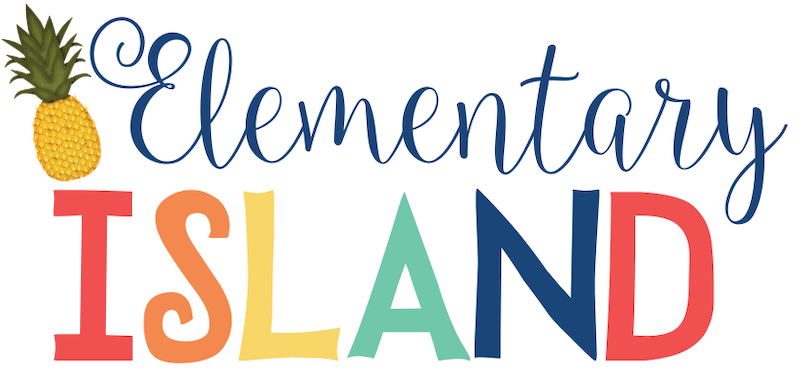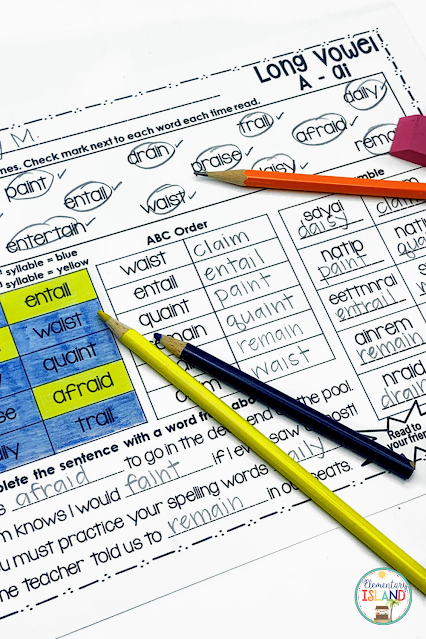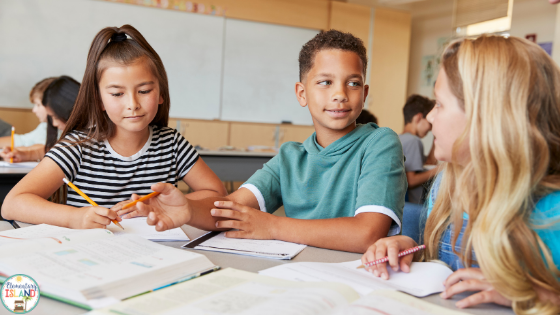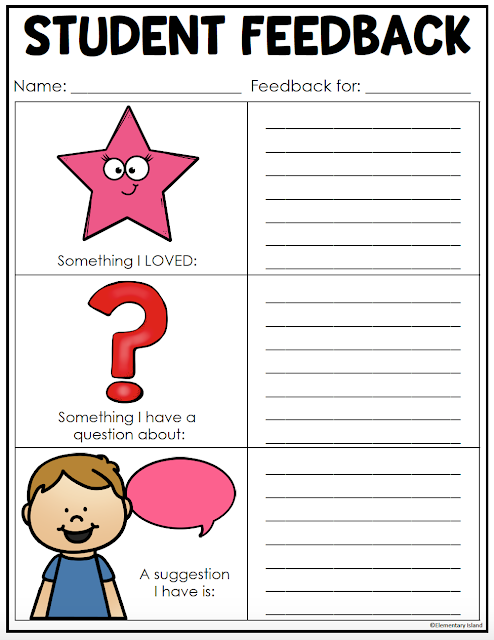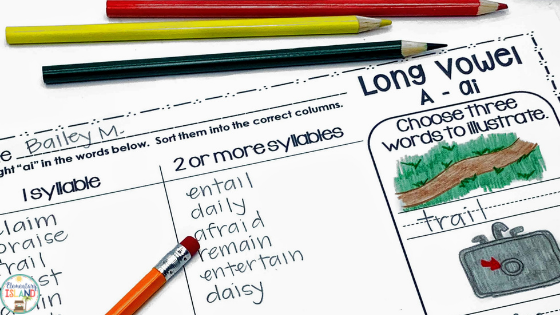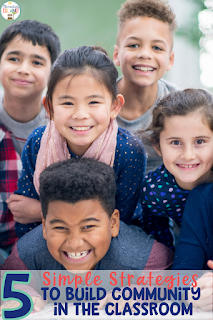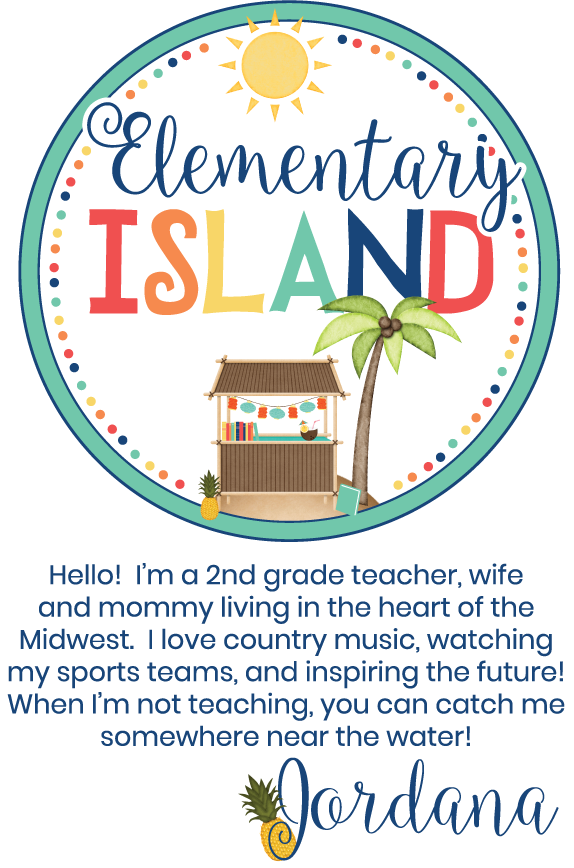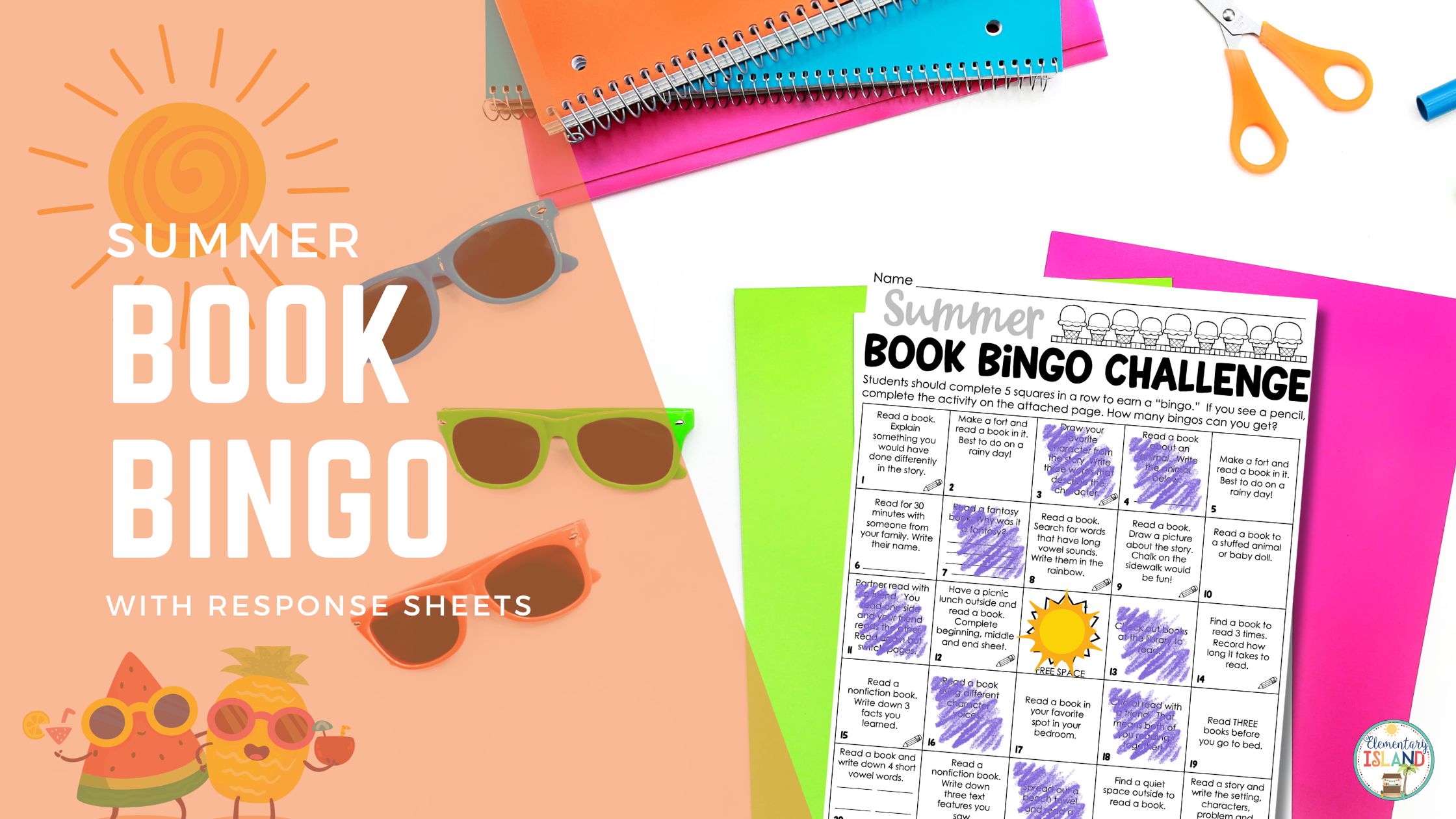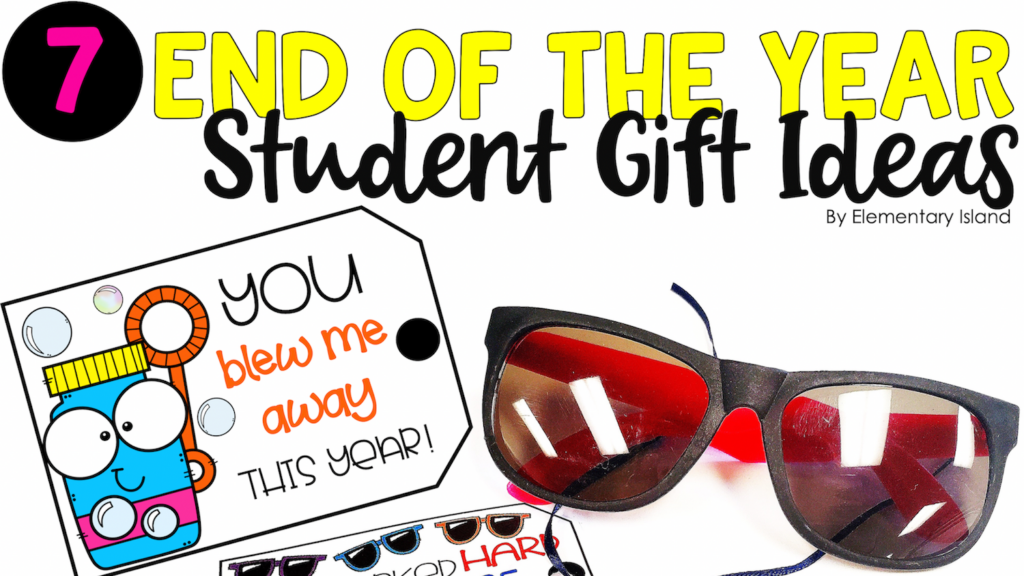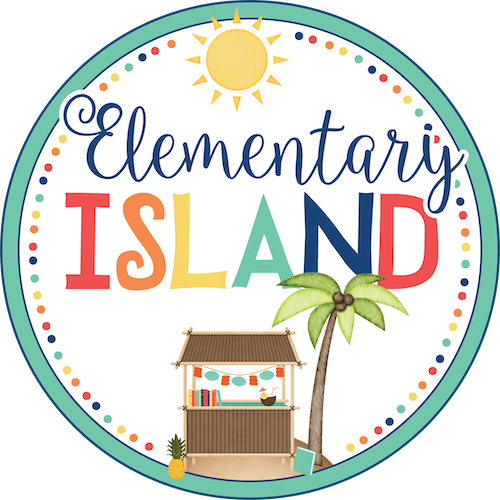As a teacher, one of my biggest goals in the classroom is not academic! But I do believe it is equally as important. One of my biggest goals is to create a community. A small microcosm that resembles a family or group of people working together for a common goal. There may not be specific standards to check off and they will likely never be scored on a standardized test, but these social interaction skills will serve them for a lifetime. Over the years, I’ve found a number of activities that are great for building classroom community. Today I am excited to share 5 that are super easy to do without the need for a lot of time or extra stuff.
1. Work Together on Assignments
One of the easiest ways to build a classroom community is to provide students with plenty of opportunities to work together. This simple of act of having students work with partners or in small groups teaches our students so many things. First, they learn that it is okay ask for help. Second, they learn that together they can reach a common goal. Third, they learn that they can learn from others. I could keep going and going on about how valuable this is. Instead let’s see what this might look like in the classroom.
If your students are working on a worksheet based activity, they could work with a partner. This Challenge Phonics activity is a great example.
In this activity students are working on the long A sound using the ‘ai’ vowel team. Instead of completing this activity individually it could easily be a partner activity. At the top, one student can read the words while other checks it off if it is correct. Then they switch. On the next section, students can clap out the syllables together and come to a consensus before coloring in the word.
The ABC order section is a great opportunity for students to review the concept and procedure for putting the words in order. If there is a disagreement, they can explain their thinking process on why they chose the next word. Students learn a lot from each other when we give them the chance to work together.
Finally, the “team” will love trying to unscramble the words and fill in the blanks to make sentences for the words. Multiple opportunities for discussion or peer to peer teaching.
These opportunities for partner and group work are so valuable. One of the hardest things you will have to do in this process is stay out of the way.
2. Set Class Goals
Another easy way to create the feeling of community and teamwork is to set class goals. This is often done with behavior related activities as part of the class or school behavior system. But it doesn’t have to be limited to those cases. You can set class goals for learning too!
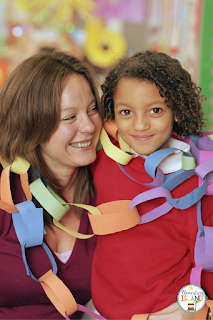 Choose something you want your students to work on. Are they not reading as much as you would like? Getting slack on turning in homework or assignments on time? What about not putting in the effort on their work that you know they are capable of? All of these things make great class goals!
Choose something you want your students to work on. Are they not reading as much as you would like? Getting slack on turning in homework or assignments on time? What about not putting in the effort on their work that you know they are capable of? All of these things make great class goals!
Let’s take the first one as an example. If you feel like your students are not doing the independent reading that they should be, set a class goal to finish a certain number of books in a specific time period. Each time a student finishes a book let them add a link to a paper chain that hangs in the classroom. They will have to work together, everyone contributing their part, in order to meet that goal.
Maybe homework completion has become a problem. Set a goal of the entire class turning in their homework, on time, in order to earn 5 minutes of extra recess. Then watch as they encourage and remind each other to get that homework done.
3. Positive Feedback
If you’ve been in the classroom or worked with kids for any length of time, then you know the power of positive feedback. Students, actually people of all ages, love getting positive feedback on something they have done. It can be a physical act or something that displays a character trait. AND . . . it can be something for the class.
Positive feedback for the class goes a long way to building community in the classroom. Why? Because intrinsic in the positive feedback is the message that this was done together, as a group.
Here’s some great group feedback ideas:
- What a great job you did completing today’s spelling assignment.
- Wow! You are an amazing learner. I really love how you applied our writing lesson in your journal writing today.
- I really like how respectful you were in the cafeteria today.
- You are a teacher’s dream. I am so proud of how you worked together to solve this complicated math problem.
4. Give Students a Voice
Giving students a voice in the classroom that goes beyond just answering questions is a wonderful way to make them feel they are a vital part of the classroom community. Making the classroom a safe place to ask questions, share ideas and express struggles is so important. A monthly student feedback form is a great way to do this. Each month make time in the schedule to have students share what they loved, ask a question and make a suggestion. Grab this free Student Feedback Form and use it in your classroom!
What I love about this form is that you could use it as a teacher, too. You could use it to give positive feedback and suggestions on a writing assignment or book report. This free download also includes a Feedback Bookmark filled with sentence stems for each category.
5. Teach that Mistakes are Part of Learning
The final way to build a great community of supportive learners is for students to know the positive value of making mistakes. Teach students that mistakes are a part of the learning process. If you need an example, share the story of Thomas Edison. It took Edison 1,000 FAILED attempts at the light bulb before he made one that worked.
Build mistakes into the teaching process in your classroom. When mistakes are normalized or even praised then they don’t become a big deal. As you work through activities as a class use this key question, “What did you learn from that?” This will help reinforce that mistakes have power to make us better.
Once you have laid the foundation that mistakes are part of learning, then you have naturally created a safe place to make mistakes. This happens because mistakes are no longer looked at as a failure – but instead a learning opportunity.
These phonics activities are a great example. Say you are working on the long A sound using the ‘ai’ spelling pattern and sorting them by syllables. During a mini-lesson you might asked students to share some ‘ai’ words they know. As you make a list, a student shares the word pain. Then another student says “but there is another kind of pane too – like a window pane.” You now have a great opportunity to learn from the mistake. As you correct the spelling misunderstanding you can follow it up by asking the students what they learned from that. There are a variety of possible answers:
- I learned that there were two kinds of panes/pains
- I learned that there is more than one way to make the Long A sound
- I learned that pain and pane are homophones
Add a little positive feedback to the end of that and you have just had an amazing learning moment that stemmed from a mistake.
Building a Community Can be Easy!
As you can see, it doesn’t have to be hard to build a classroom community. You don’t need a lot of fancy supplies or expensive rewards. You can build it into each day with these easy to implement ideas.
Save these ideas to your favorite classroom Pinterest board so you can come back!
